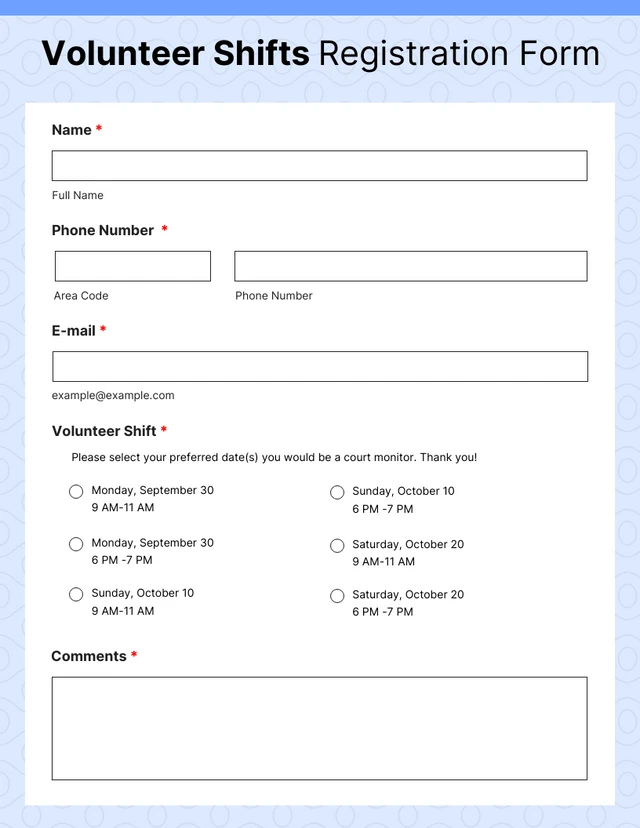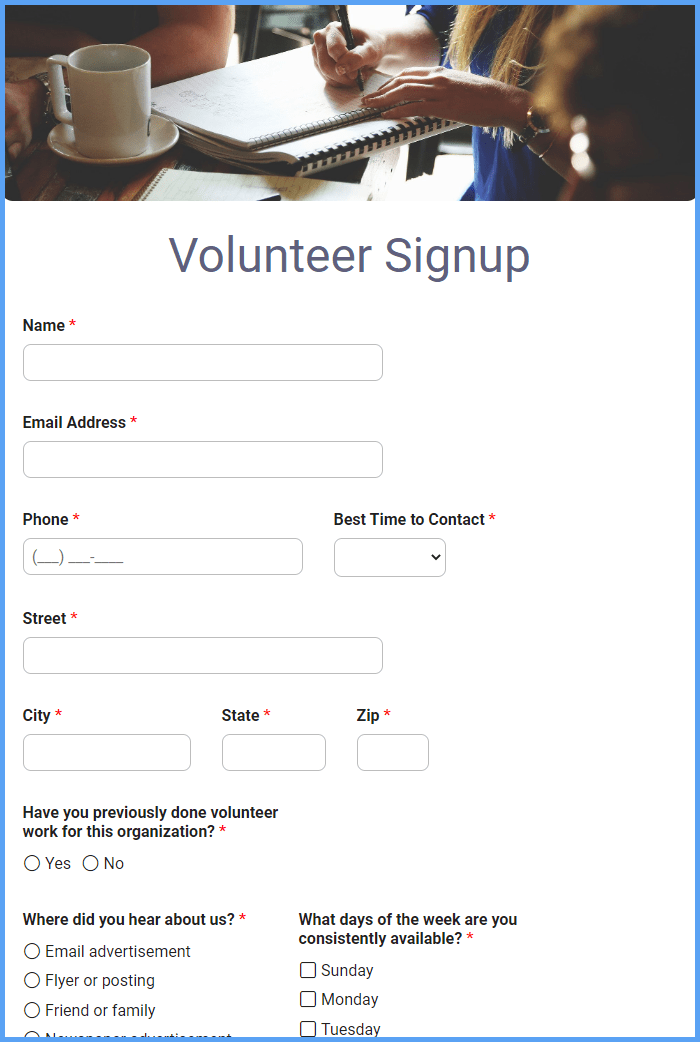When organizing an event or project that requires volunteers, it is essential to have a systematic way of gathering information from potential volunteers. A volunteer registration form is a valuable tool that allows you to collect necessary details from individuals who are interested in contributing their time and effort.
In this article, we will explore the what, why, how, and tips for creating an effective volunteer registration form.
What is a Volunteer Registration Form?
A volunteer registration form is a document that gathers information from individuals who wish to volunteer for a specific event or project. It serves as an organized way to collect contact details, availability, skills, and other necessary information from potential volunteers.
This form can be printed and distributed physically or made available online for easy access and submission.

Why Use a Volunteer Registration Form?
Using a volunteer registration form offers several benefits:
- Efficient Data Collection: A well-designed form allows you to gather all the necessary information from volunteers in a systematic manner.
- Organization and Planning: The collected data helps you assess the availability, skills, and preferences of volunteers, allowing you to plan and assign tasks more effectively.
- Communication: Having contact information readily available enables you to communicate with volunteers regarding updates, changes, and other important details.
- Legal Protection: The form can include important disclaimers, waivers, and consent clauses to protect both the organizers and volunteers.
How to Create a Volunteer Registration Form
Creating a volunteer registration form involves several steps:
1. Determine the Required Information
Start by identifying the specific details you need from potential volunteers. Typical information includes:
- Contact details (name, address, phone number, email)
- Availability (days and times)
- Skills, qualifications, or areas of interest
- Emergency contact information
- Any special requirements or accommodations needed
2. Choose a Design or Template
Select a design or template that suits your event or project. Make sure the layout is clear and easy to read. You can find free volunteer registration form templates online or create your own using word processing software.
3. Create Clear Instructions
Include instructions at the beginning of the form, explaining how to fill it out and where to submit it. Use simple language and provide examples if necessary to avoid confusion.
4. Include Necessary Disclaimers and Consent Clauses
If applicable, include disclaimers, waivers, and consent clauses to protect both the organizers and volunteers. These may include liability waivers, photo release forms, or confidentiality agreements.
5. Provide Ample Space for Responses
Ensure that each section of the form has enough space for volunteers to provide their responses. Consider using checkboxes, dropdown menus, or open-ended questions depending on the information you need.
6. Add a Signature Line
Include a signature line at the end of the form to obtain the volunteer’s consent and acknowledgment of the provided information.
7. Test and Review
Before finalizing the volunteer registration form, test it to ensure all the fields are working correctly and there are no spelling or grammatical errors. Review the form multiple times to guarantee its accuracy and clarity.
8. Print and Distribute
If you plan to distribute physical copies of the form, ensure that you print enough copies for potential volunteers. Make them readily available at locations where individuals can easily access and submit them.
9. Make it Available Online
To reach a wider audience, consider making the volunteer registration form available online. Create a digital version of the form that can be filled out and submitted electronically. You can use online form builders or embed the form on your website.
Examples




Tips for Successful Volunteer Registration
Follow these tips to ensure a successful volunteer registration process:
- Keep the form concise: Avoid overwhelming potential volunteers with excessive questions. Keep the form concise and only include essential information.
- Use clear and simple language: Write instructions and questions in clear and simple language to avoid confusion.
- Consider digital options: Using online form builders or embedding the form on your website allows for easier submission and data management.
- Promote the form: Advertise the availability of the volunteer registration form through various channels, such as social media, websites, and community bulletin boards.
- Provide multiple submission options: Offer both physical and online submission options to accommodate different preferences.
- Follow up with volunteers: Regularly communicate with volunteers to provide updates, express gratitude, and address any concerns they may have.
- Ensure data privacy: Take necessary measures to protect the personal information of volunteers and adhere to data protection regulations.
Conclusion
A volunteer registration form is an essential tool when gathering information from individuals interested in volunteering for a specific event or project.
By following the steps outlined in this guide and implementing the provided tips, you can create an effective form that streamlines the registration process and ensures a successful volunteer experience.
Volunteer Registration Form – Download